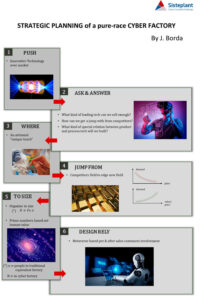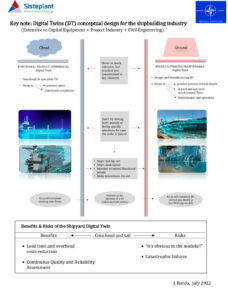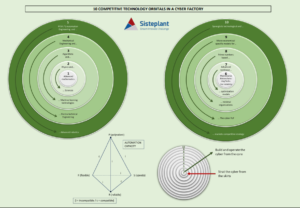Author: Javier Borda Elejabarriata
Prof. Dr. Ing. & Chairman of Sisteplant
Western industries adopted Lean in the 80´s as a reaction to the apparently too sophisticated and unreliable technology; FMS for the manufacturing versatile and agile flow, and CIM* for its upper level integration with product design and business model.
This desperate approach, though short-termed useful, inhibited further competitive technology development, so being harmful looking into the future.
Lean is nothing but the common sense that must be behind any well-conceived business: “serve punctually, with full quality, and readily to adapt quantity or date”. The whole thing is that we tried to do that with untenable inventory, lot sizes and rigid automation and, in consequence all them were focus for Lean.
But instead of upgrading the manufacturing technology and organizational models to feel the hole, Lean simply removed the technologies that considerated more “alien” from the shop floor. FMS an CIM where those years exactly what X.0 (now ticketed 4.0) means today, and both procured to produce with extreme reliability and agility by flexible-automated devices, and I.T. that was far from the friendliness we enjoy today, but being useful though.
The appropriated way on all that had to have been training and engaging people with the attractiveness of the whole FMS-CIM system that frames them more as creative thinker people than manual related ones.
Today, the History replicates, but we have some crucial differences:
- People are used to an I.T. much more close to and easy to use.
- Agility and more than 6Sigma reliability are deep inside the business culture of everybody.
- The manufacturing technology state of the art has evolved accordingly, and machines, tooling and handling are easier to integrate in a versatile way.
Having said that, what is Lean X.0?
- Instead of simply “removing waste” (the traditional icon for Lean), Lean X.0 creates value, which only comes be done from technology. Never misunderstand or mix both concepts value or waste, because they are different and obtained from very different ways.
- As pole opposed to the traditional Lean, it improves dramatically (no step by step) agility and quality.
- This means that improvements are created from inside technology, and never outside it, as traditional Lean does.
- Also means that the well known “continuous improvement” (CI) is embedded as a subordinated part of the “radical improvements” (RI).
- This integration requires crafting special RI-CI cycles that are self-sustained and motivate people with the deep understanding of technology.
- Plant layouts, tooling and handling conception are an essential part of Lean X.0, which must procure to integrate them into reconfigurable shops.
- The I.T. (MES, CAMS, Machine Learning, etc.) is also a crucial item for Lean X.0, with the focus in making much more easy to continuously adapt design and manufacturing flows.

A great number of general consultants are dedicated to Lean, but are they really prepared for Lean X.0? Are they technologist in manufacturing devices and intelligent systems, or simply management experts?
Lean X.0 is a much different thing.





